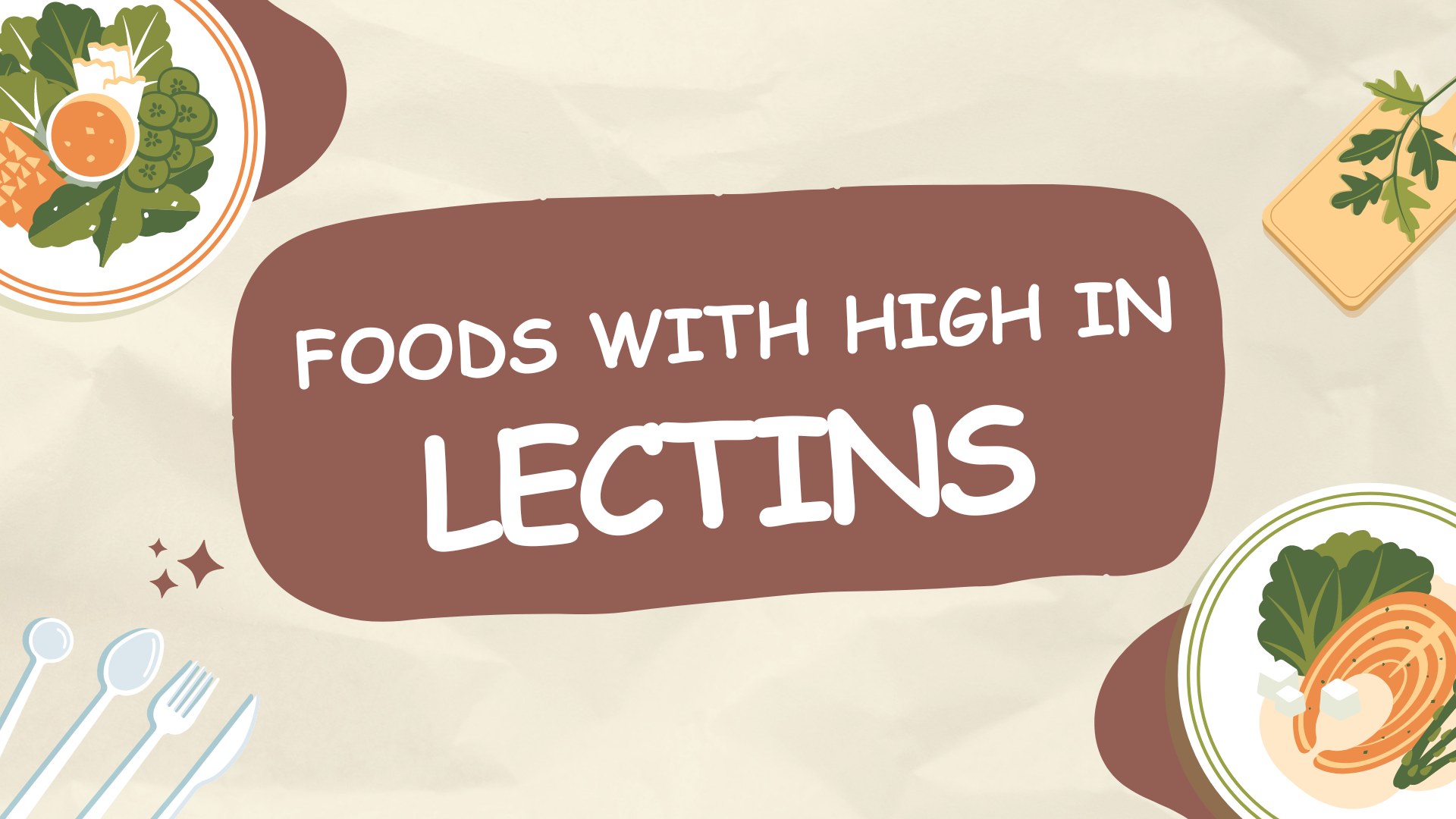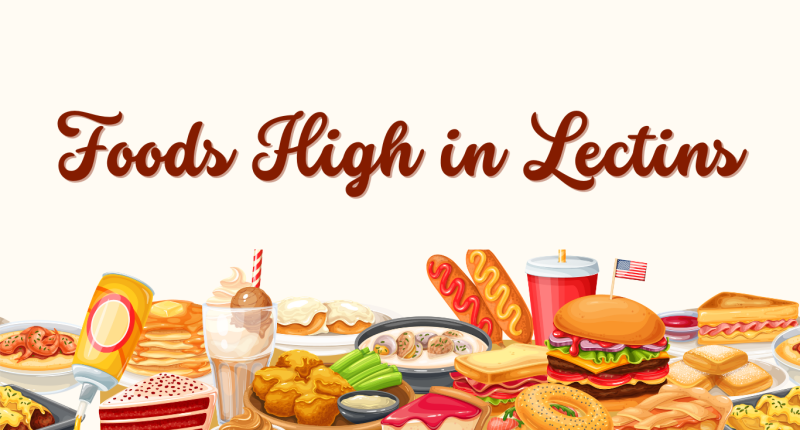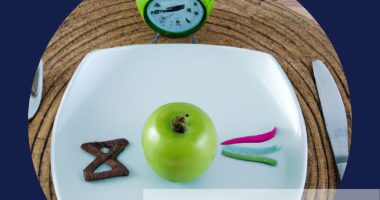Lectins, a type of protein found in many foods, have gained attention for their potential health risks. Often referred to as “antinutrients,” lectins can interfere with nutrient absorption and may contribute to various health issues. As more people adopt plant-based diets, understanding the role of lectins is crucial. In this article, we will explore seven foods high in lectins, the potential health risks associated with them, and why some individuals might choose to limit their intake.

What Are Lectins?
Lectins are carbohydrate-binding proteins that are found in a variety of foods, particularly in legumes, grains, and some vegetables. They serve as a natural defense mechanism for plants, protecting them from pests and pathogens. However, when consumed in large amounts, lectins can have adverse effects on human health.
The Controversy Surrounding Lectins
The debate over lectins primarily focuses on their effects on human health. Some studies suggest that high lectin consumption can lead to gastrointestinal distress, inflammation, and even autoimmune responses. For instance, a study published in the Journal of Nutrition found that lectins can disrupt the intestinal barrier, leading to increased gut permeability, commonly referred to as “leaky gut” syndrome (Mao et al., 2018). However, many foods high in lectins are also rich in nutrients and beneficial compounds, making the conversation about their safety complex.
7 Foods High in Lectins
1. Raw Kidney Beans
Raw kidney beans, particularly red kidney beans, contain high levels of a toxic lectin known as phytohaemagglutinin. This lectin can cause severe gastrointestinal distress if the beans are consumed raw or undercooked. According to the Food and Chemical Toxicology journal, boiling kidney beans for at least 10 minutes effectively destroys the harmful lectins.
Raw red kidney beans contain between 20,000 to 70,000 hemagglutinating units (hau) of lectins. Just five raw kidney beans can lead to symptoms such as nausea, vomiting, and diarrhea. In contrast, when cooked properly—preferably using a pressure cooker—the lectin content is reduced to a safe level of approximately 200 to 400 hau, which is generally considered safe for consumption.
Health Risks
- Toxicity: The consumption of raw or improperly cooked kidney beans can result in acute toxicity, with symptoms appearing within one to three hours after ingestion. These symptoms include severe nausea, vomiting, and abdominal pain, although they typically resolve without the need for hospitalization.
- Digestive Issues: For individuals with sensitive digestive systems, even the reduced levels of lectins in properly cooked beans may still pose a risk, potentially exacerbating conditions like irritable bowel syndrome (IBS).
Nutritional Benefits
Despite their lectin content, cooked kidney beans are a nutritious food source. They are rich in protein, fiber, and essential vitamins and minerals, including iron, potassium, folate, and vitamin K1. They also provide low-glycemic carbohydrates, which can be beneficial for blood sugar control.
Recommendations for Safe Consumption
To safely enjoy kidney beans, it is crucial to:
- Soak: Soak dried kidney beans in water for several hours before cooking. This can help reduce cooking time and further decrease lectin levels.
- Cook Thoroughly: Ensure that kidney beans are cooked at high temperatures (boiling or pressure cooking) for sufficient time to deactivate the lectins. This process is essential to make them safe for consumption.
2. Peanuts
Peanuts contain heat-resistant lectins, which means that cooking does not significantly reduce their lectin levels. Research has shown that lectins can cross the intestinal barrier and enter the bloodstream after consumption, indicating potential implications for gut health and nutrient absorption. A study found that lectins were detectable in the blood of participants after they consumed either raw or roasted peanuts, suggesting that these lectins can affect gut permeability, sometimes referred to as “leaky gut”.
Health Risks
- Digestive Issues: For some individuals, especially those with sensitivities, the lectins in peanuts may contribute to gastrointestinal discomfort, including bloating and gas.
- Potential Cancer Links: Test-tube studies have indicated that peanut lectins may promote the growth of cancer cells. However, these studies used high doses of pure lectins, and there is no conclusive evidence from human studies to support that dietary lectins from peanuts increase cancer risk.
- Nutrient Absorption: Lectins can bind to carbohydrates and may interfere with the absorption of certain nutrients, potentially leading to deficiencies if consumed in excessive amounts over time.
Nutritional Benefits
Despite their lectin content, peanuts are rich in nutrients, providing:
- Protein: A good source of plant-based protein.
- Healthy Fats: High in mono- and polyunsaturated fats, which are beneficial for heart health.
- Vitamins and Minerals: Rich in biotin, vitamin E, thiamine, and various antioxidants, peanuts have been associated with a reduced risk of heart disease and gallstones.
Recommendations for Consumption
To enjoy peanuts while minimizing potential negative effects:
- Moderation: Consume peanuts in moderation, especially if you have a history of digestive issues or sensitivities.
- Cooking: While roasting does not significantly reduce lectin levels, it can improve flavor and digestibility.
3. Whole Grains
Whole grains are known to have varying levels of lectins. For instance, raw wheat and wheat germ can contain around 300 micrograms of lectins per gram, while whole wheat flour has about 30 micrograms per gram. Cooking methods, such as boiling or baking, significantly reduce lectin levels, making these grains safer for consumption. A study in The American Journal of Clinical Nutrition highlighted that wheat lectins could disrupt gut health and contribute to inflammation (Häberle et al., 2019).
Health Risks Associated with Lectins
- Digestive Issues: Lectins can bind to the gut wall, potentially leading to symptoms like bloating, gas, and diarrhea. In some cases, they may contribute to “leaky gut” syndrome, where the intestinal barrier becomes permeable, allowing toxins and undigested food particles to enter the bloodstream.
- Nutrient Absorption: Lectins are considered antinutrients because they can interfere with the absorption of essential minerals such as zinc, iron, and calcium. This interference can lead to deficiencies if high-lectin foods are consumed excessively without proper preparation.
- Inflammation: Some studies suggest that certain lectins can trigger inflammatory responses in the body, particularly in individuals with sensitivities or autoimmune conditions. This inflammation can lead to chronic health issues over time.
Nutritional Benefits of Whole Grains
Despite their lectin content, whole grains are rich in essential nutrients, including:
- Fiber: Promotes digestive health and may help regulate blood sugar levels.
- Vitamins and Minerals: Whole grains are good sources of B vitamins, iron, magnesium, and selenium.
- Antioxidants: Compounds like ferulic acid found in whole grains are linked to reduced risks of heart disease and other chronic conditions.
Recommendations for Consumption
To enjoy the benefits of whole grains while minimizing lectin-related risks:
- Cook Thoroughly: Cooking grains can significantly reduce their lectin content. Boiling or pressure cooking is particularly effective.
- Soak and Ferment: Soaking grains before cooking can help reduce lectin levels. Fermentation is another method that can effectively decrease lectin content.
- Moderation: For those sensitive to lectins, it may be wise to consume whole grains in moderation and pay attention to how they affect individual health.
4. Raw Soybeans
Raw soybeans contain high levels of lectins, specifically soybean agglutinins (SBA), which are considered antinutrients. Consuming raw or undercooked soybeans can lead to digestive issues and potential health problems.
Soybeans are a legume that naturally contains SBA, a family of similar lectins. Even with extensive cooking, such as boiling for 20 minutes, less than half of these lectins are deactivated. SBA preferentially binds to oligosaccharide structures with terminal N-acetylgalactosamine and galactose residues. Research indicates that fermentation can reduce lectin content significantly, making these foods safer for consumption.
Health Risks
- Digestive Issues: SBA can bind to intestinal epithelial cells, causing inflammation and increased intestinal permeability, leading to acute inflammation when raw soybean meal is fed to animals.
- Nutrient Absorption: As a lectin, SBA chelates minerals, potentially reducing the bioavailability of essential nutrients.
- Metabolic Changes: Studies on rats fed SBA showed complex changes, including increased plasma aspartate aminotransferase activity, decreased plasma insulin content without a decrease in blood glucose levels, and depletion of lipids. Rats also exhibited an overgrowth of the small intestine and pancreas, while the spleen, kidneys, and pancreas showed poor growth and hypertrophy.
Reducing Lectin Content
To minimize the risks associated with raw soybeans:
- Cook Thoroughly: Soaking soybeans in water for several hours and then boiling them for an extended period can inactivate most lectins. Canning also reduces lectin levels.
- Avoid Raw Consumption: Raw or undercooked soybeans should be avoided, as simmering at low heat, such as in a slow cooker, may not remove all the lectins.
- Choose Fermented Soy Products: Fermentation can reduce lectin content by up to 95%, making products like miso and tempeh safer alternatives to raw soybeans.
5. Raw Potatoes
Raw potatoes, particularly their skins, contain high levels of lectins, which are proteins that can bind to carbohydrates and potentially cause digestive issues when consumed in large amounts. While lectins are present in many foods, raw potatoes are particularly noted for their lectin content, which can lead to symptoms such as nausea, stomach upset, and diarrhea if ingested raw.
Nutritional Content
Despite their risks, raw potatoes are rich in essential nutrients. A 100-gram serving of raw potatoes provides:
- Calories: 77
- Protein: 1.05 grams
- Carbohydrates: 17.5 grams
- Fiber: 2.1 grams
- Vitamin C: 19.7 milligrams
- Potassium: 425 milligrams
These nutrients contribute to various health benefits, including improved gut health due to fiber content and potential anti-inflammatory effects.
Risks of Eating Raw Potatoes
- Lectins: High levels can interfere with nutrient absorption and cause gastrointestinal distress. Cooking potatoes effectively reduces their lectin content.
- Solanine: Potatoes that turn green due to prolonged exposure to light produce solanine, a toxic compound that can cause headaches, nausea, and in severe cases, central nervous system issues. It’s advisable to discard any green parts before consumption.
- Digestive Issues: The fiber and resistant starch in raw potatoes may lead to bloating and discomfort in some individuals, particularly when consumed in large quantities.
6. Tomatoes
Tomatoes belong to the nightshade family, which generally has higher lectin levels. The lectins in tomatoes are primarily concentrated in the skins and seeds. While cooking can reduce lectin levels, studies indicate that tomato lectins may resist digestion and can bind to intestinal villi without causing immediate damage.
Potential Health Effects
- Digestive Issues: For some people, particularly those with sensitivities, the lectins in tomatoes can contribute to digestive discomfort, including bloating and gas.
- Inflammation: There is a belief among some that nightshade vegetables, including tomatoes, may be linked to inflammation and conditions like arthritis. However, scientific evidence supporting this claim is limited, and most individuals can consume tomatoes without adverse effects.
- Nutritional Benefits: Despite their lectin content, tomatoes are rich in vitamins, minerals, and antioxidants, particularly lycopene, which is associated with various health benefits, including reduced risk of heart disease and certain cancers.
Recommendations for Consumption
To minimize lectin intake from tomatoes, consider the following:
- Remove Skins and Seeds: Since these parts contain the highest levels of lectins, peeling tomatoes and removing seeds can significantly reduce lectin content.
- Cooking: Cooking tomatoes can help inactivate some lectins, making them easier to digest. Incorporating cooked tomatoes into your diet can provide their health benefits while reducing potential negative effects.
7. Eggplant
Eggplant, a member of the nightshade family, contains lectins that can potentially cause digestive issues and inflammation in some people. However, eggplant also provides numerous health benefits and can be safely consumed with proper preparation.
Eggplant skin and seeds contain the highest concentrations of lectins. These proteins act as a defense mechanism for the plant, discouraging insects and animals from eating it by causing digestive discomfort.
Potential Health Effects
- Digestive Issues: For individuals sensitive to lectins, consuming raw or undercooked eggplant may lead to bloating, gas, and other digestive discomfort.
- Inflammation: Some believe that nightshade vegetables like eggplant may contribute to inflammation and worsen conditions like arthritis. However, scientific evidence supporting this claim is limited.
- Nutritional Benefits: Despite its lectin content, eggplant is a healthy vegetable rich in antioxidants, fiber, and various vitamins and minerals. It is low in calories and may help with weight management.
Recommendations for Consumption
To minimize lectin intake from eggplant:
- Peel and Deseed: Removing the skin and seeds can significantly reduce lectin content.
- Cook Thoroughly: Cooking eggplant, especially by boiling or pressure cooking, helps inactivate lectins and makes them easier to digest.
- Consume in Moderation: For most people, enjoying eggplant as part of a balanced diet is unlikely to cause issues. Those sensitive to lectins may need to limit intake.
Why Avoid High-Lectin Foods?
Potential Health Risks
Gastrointestinal Distress: High lectin consumption can lead to symptoms such as bloating, gas, diarrhea, and nausea. Individuals with sensitive digestive systems may experience these symptoms after consuming high-lectin foods.
Nutrient Absorption Issues: Lectins can bind to the gut lining, potentially interfering with the absorption of essential nutrients like calcium, iron, and zinc. A study in Gut found that lectins can inhibit nutrient absorption, leading to deficiencies over time.
Autoimmune Responses: Some studies suggest that lectins may trigger autoimmune reactions in susceptible individuals, contributing to conditions like rheumatoid arthritis and type 1 diabetes. The Journal of Autoimmunity published findings indicating a correlation between lectin consumption and autoimmune disorders.
Who Should Avoid Lectins?
Despite their potential benefits, there may be a small percentage of the population who should limit their intake of lectins, such as:
- People with allergies or sensitivities to lectin-containing foods
- People with digestive issues like irritable bowel syndrome or Crohn’s disease
- Possibly people with autoimmune disorders
However, for most people, the benefits of eating lectin-containing whole foods like fruits, vegetables, legumes, and whole grains outweigh the potential risks. These foods provide valuable vitamins, minerals, fiber, and other beneficial nutrients.
If you do notice side effects after eating high-lectin foods, you may have a sensitivity. In that case, consider reducing intake or ensuring foods are adequately cooked, as cooking can significantly reduce lectin levels. For example, some people don’t tolerate raw tomatoes well but can handle cooked tomato products.
Ultimately, listen to your body. If you suspect lectins are causing issues, experiment with eliminating them for a period and monitor your symptoms. But for the general population, avoiding lectin-containing whole foods is not necessary and may do more harm than good by limiting intake of nutritious plant foods.
FAQs
Q: Are all lectins harmful?
A: Not all lectins are harmful. Many foods containing lectins also provide essential nutrients and health benefits. The effects of lectins can vary based on individual sensitivities and the preparation of the food.
Q: Can cooking reduce lectin levels?
A: Yes, cooking methods such as boiling, soaking, and fermenting can significantly reduce the lectin content in many foods, making them safer to consume.
Q: Should I eliminate all high-lectin foods from my diet?
A: It depends on individual health conditions and sensitivities. Many people can safely consume lectin-containing foods when they are properly cooked. If you have specific health concerns, consult with a healthcare professional.
Conclusion
Understanding the role of lectins in our diet is essential for making informed food choices. While some individuals may need to avoid high-lectin foods due to sensitivities, many can enjoy these foods safely when prepared correctly. Moderation and awareness are key to achieving a balanced and healthy diet. As always, it is advisable to consult with a healthcare professional before making significant dietary changes.
Also Read | 10 Surprising Things You Need to Know Before Going Vegan Diet Lifestyle









